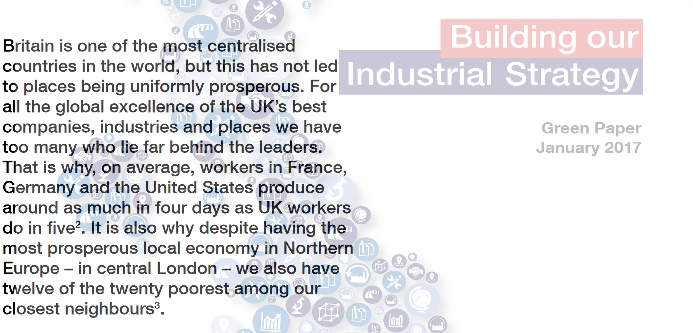As the United Kingdom steams towards Brexit, much attention is directed at the process of leaving. But where is the country heading? A House of Lords committee asks if the UK is really leaving its problems behind, writes John Egan.
The House of Lord’s Science and Technology Committee today launched an investigation into the UK’s post-Brexit industrial strategy, which currently appears as a consultative green paper with a plan aimed at creating a more productive and prosperous economy and spreading this prosperity more evenly throughout the regions.
It is the ninth such industrial strategy since 1947 and all have been proposed to address the same problems of low productivity and the inability of UK industry to benefit from the nation’s acknowledged excellence in research and discovery. It is reasonable to say that the previous attempts were less than successful and for the six expert witnesses to be asked by committee member Lord Hennessy, “What is different this time?”
The answers shifted through the detail in search of grains of hope: Brexit means the country cannot afford to fail, there is a commitment to the right kind of (STEM) skills development, innovation and science audits are able to identify the geographical spread of excellence across the UK.
Professor Richard Jones of Sheffield University was more forthright in conceding that there was nothing new in the proposed industrial strategy, and that it may add to the previous history of failure.
At such times, it is natural to dig into local experience to seek examples of what has worked to improve industrial competitiveness and harmonious industry-university collaboration. Professor Iain Gray, Vice-President of the Royal Society of Edinburgh pointed to previous Industry Leadership Councils as a way to build cohesive industrial sectors.
Professor Dame Ann Dowling President of the Royal Academy of Engineering spoke of the need to enhance skills and ambition in mid-sized companies to close the gap with innovative companies at the technology frontier and to become global organisations.
Professor Robert Allison, Vice-Chancellor and President of Loughborough University, described arrangements where small companies can be co-located with technology development organisations to connect up the technology readiness pathway.
Importantly, some relevant issues emerged in the flow of inquiry discussion. It is the great contribution of such a distinguished Lord’s committee to expose these essential but otherwise obscured issues. For the record we note these points:-
- It is not just about technology – personal skills matter greatly. In particular, appropriate leadership is essential for industrial and sectoral development and there is a deficit in these leadership skills, including entrepreneurial and soft-skills.
- Means to free up the movement and placement of people in different colleges, universities and industry is necessary to enhance collaborations between these organisations.
- The institutional landscape for effective deployment of an industrial strategy is unwieldy and complex, involving national government and devolved administrations, Northern Powerhouse and Midlands Engine, Local Enterprise Partnerships and City Regions, research councils, catapults and others. (Professor Allison noted that he had received 22 invitations from local organisations to contribute Industrial Strategy feedback)
- Future innovations are hard to predict and may be radical and disruptive. The most prepared economies, organisations and people are those that are highly skilled and also mobile, agile and able to adapt to changing circumstances.
- Modern innovation tends to concentrate activity in tight geographical clusters. The aim of spreading the activity geographically to serve purposes of regional development and share prosperity conflicts with this normal dynamic. There is a huge amount of work needed to reconcile these divergent aims.
- It will be important to limit the degree that different regions in the UK compete with each other. Gone should be the days when every region had its own locally funded nanotechnology centre of excellence.
What is really missing in all of the above discussion is a big picture with a compelling vision to attract the right participants to make it a reality. What will the British economy look like in the future?
Post-Brexit scenarios have been painted with a good number of colourful images: from cliff-edge to Titanic success. It seems that the future industrial landscape will also need to be redrawn.




